Lab-Grown Diamond Prices – March 2025
For the first time, PriceScope is proud to launch our comprehensive Lab-Grown Diamond Price Analysis, at the beginning of each month, we will provide actionable insights into this rapidly evolving…
Diamond “certification” refers to the laboratory grading report which establishes the diamond’s value-setting 4Cs. If a diamond is over graded you’ll overpay for it, so it’s important to choose a diamond grading process that follows strict, international standards.
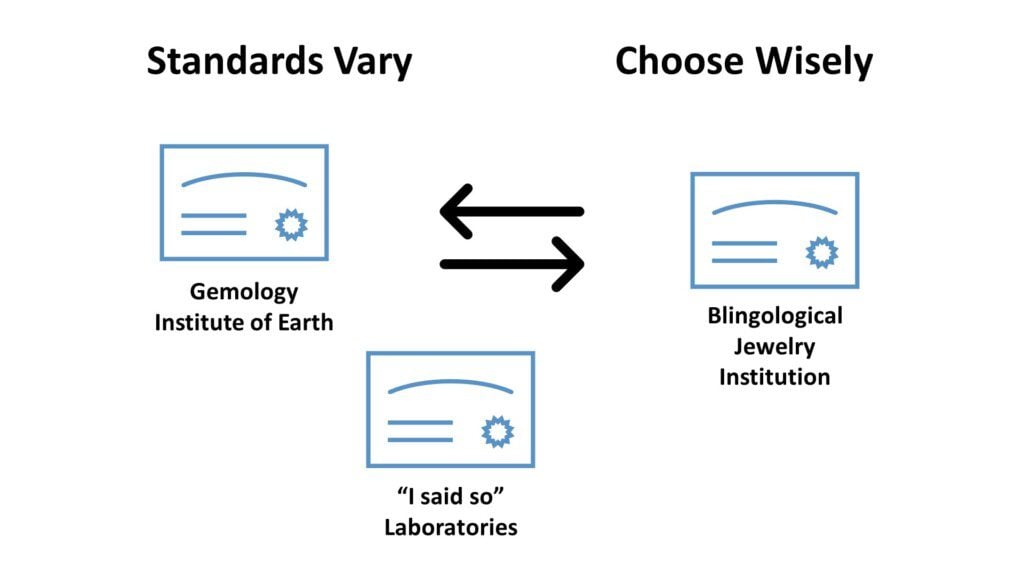
PriceScope Pointer: This page includes information about four leading diamond laboratories. The GIA created the Diamond 4Cs used by all grading labs today. The AGS established the world’s first meaningful scientific cut grading system. The IGI was first to fully grade lab grown diamonds and grades finished jewelry. The GCAL issues a true “certification” and offers Gemprint, standardized images and videography.
Before going on: Check out the PriceScope Diamond Buying Guide
These pages may reference products from companies that help to support PriceScope.
Intermediate Diamond Certification
Advanced Diamond Certification
Wondering which of the many diamond colors is best for you? Our elite list of vetted vendors like Whiteflash and James Allen are experts at listening and helping you determine which combo of the 4Cs is perfect for you - and nicely in budget. Contact Us and get help today.
A diamond certificate (or grading report) is issued by an independent gemological laboratory, following a secure, standardized diamond grading process. It’s an assessment of the diamond’s 4Cs: Carat weight, measurements in millimeters and judgments involving color, clarity, and human craftsmanship. Many grading reports include a drawing of the diamond with its physical proportions and a plotted clarity diagram of key characteristics. Some grading laboratories publish supplemental standardized photos and videos online.
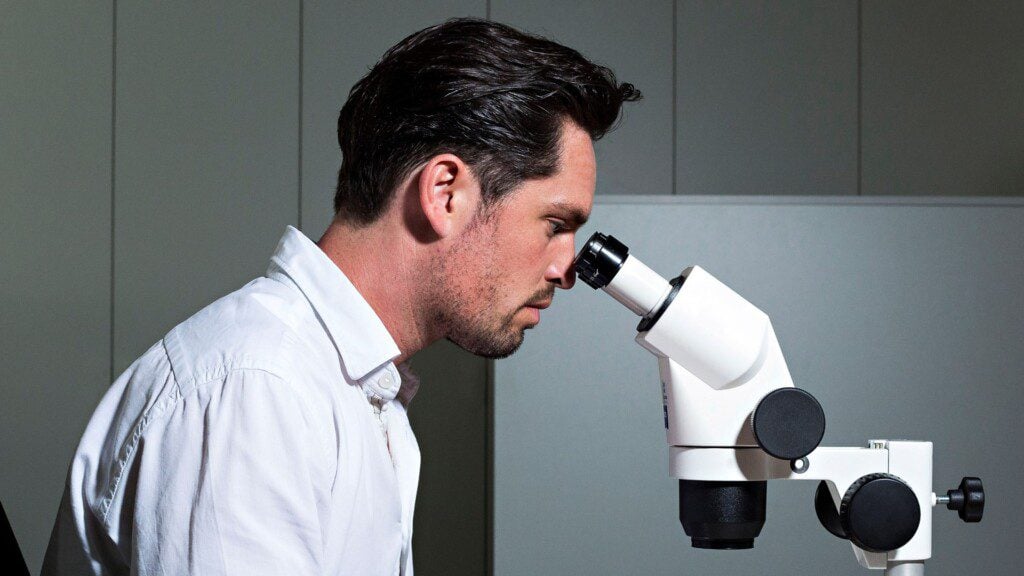
Note: The word “certificate” describes an official attestation. This is not what most laboratories provide. The documents produced are “grading reports” with fine print stipulating those grades are an opinion. The GCAL is an exception, issuing guaranteed certification. The AGS will also issue certification as a separate service to its member jewelers.
The International Gemological Institute (IGI) is a supporting PriceScope partner. The IGI grades more diamonds gemstones and finished jewelry in more locations around the world than any other institute and operates 14 schools of gemology. IGI was the first laboratory to grade “Hearts and Arrows” diamonds, pioneered full grading of lab grown diamonds in 2005 and is the first laboratory to hold ISO 17025 certification for both Lab-Grown and Natural Diamonds.
For loose diamonds: GIA, AGS, IGI and GCAL are all well established top-tier laboratories. They have different strengths, described below in diamond certification analysis, but they all follow a thorough, proven diamond grading process. With any of their grading reports, you can rely on the following:
Carat weight is a standardized measurement. A diamond’s carat weight will be the same at any top-tier laboratory, reported to two decimal places. The AGS reports carat weight to three decimal places.
Top-tier laboratories use strict, industry-accepted international standards for diamond color and clarity grading, including calibrated master-stone sets between locations to ensure consistency. With that said, diamond color and clarity occur on a sliding scale. A diamond sitting directly on the border of two grades may come out either way, depending on the subjective opinion of the gemologist making the judgment, making slight deviation between professional gemologists possible.
The various laboratories approach diamond cut quality assessment and standards differently. This is important to understand, especially when choosing a diamond online. Read our section on diamond cut for more information.
PriceScope Pointer: Be sure to read about diamond cut before making a decision. You may not need super ideal cut, but you will want to avoid cutting that makes the diamond look smaller, either physically (small spread) or visually (its edges go dark).
If you have shopped for jewelry in mall-based chain or department stores, you may have been shown “certificates” describing finished jewelry. These documents should not be confused with loose gemstone reports. They are often mass-produced for thousands of articles at the most economical price-points. They lack the specificity and strictness of loose diamond grading reports, which thoroughly assess a single gemstone. Read more about Jewelry Reports below.

Get full protection: Our vetted vendors Whiteflash, Blue Nile and JamesAllen.com sell diamonds graded by top-tier laboratories. As an added layer of protection, those vendors have in-house gemologists inspect those diamonds to ensure accurate grading.
Successful online sellers like our recommended PriceScope vendors offer diamond certification from top-tier laboratories, whether you’re examining it in-person or purchasing online. They also offer liberal inspection periods and free returns so you can make your purchase with complete confidence..
Diamond certificates (aka grading reports) are issued by independent laboratories following a strict, secure process of diamond grading. In this section we will provide information on the most recognized gemological institutes operating in the United States and, in some cases, around the world.
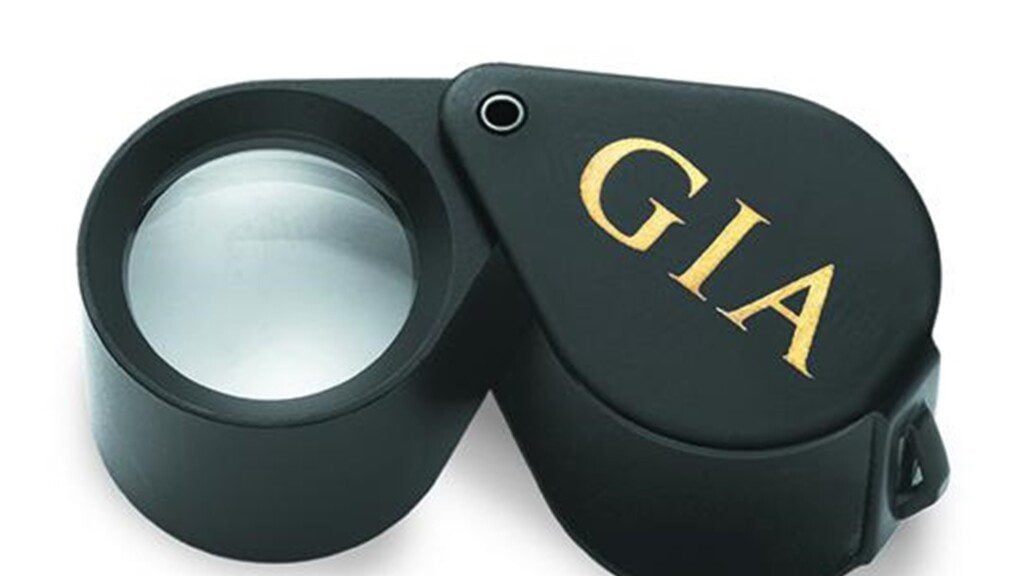
Established in 1931 by Robert Shipley, the GIA is widely considered the world’s foremost authority on diamonds, colored stones, and pearls. A public benefit, nonprofit institute, the GIA is the leading source of knowledge, standards, and education in gems and jewelry. As the oldest and most widely recognized gemological institute, the GIA has long set the standards by which other laboratories are measured.
PriceScope Pointer: The GIA is the world’s most recognized institute. If you were to buy a million dollar diamond at a Sotheby’s auction you would expect it to come with a GIA grading report.
The GIA’s diamond grading report provides a 4Cs assessment with a plotted clarity diagram. The GIA only provides a cut grade for round brilliant diamonds. All other shapes are only graded for polish and symmetry, not for cut.
The GIA Diamond Dossier is available for a lower fee and frequently accompanies smaller diamonds. It has a 4Cs assessment but no clarity plot, so laser inscribing the GIA report number is a required and included service.
The GIA eReport appears online with 4Cs assessment and a standardized face-up diamond image.
Starting in 2020 the GIA began issuing a Laboratory Grown Diamond Report and Dossier Report digitally, with full 4Cs assessment. The dossier report has no clarity plot. Laboratory grown diamonds will have their girdles laser inscribed with the term “Laboratory Grown” along with the GIA report number. These reports are online only, GIA does not provide them in printed form.
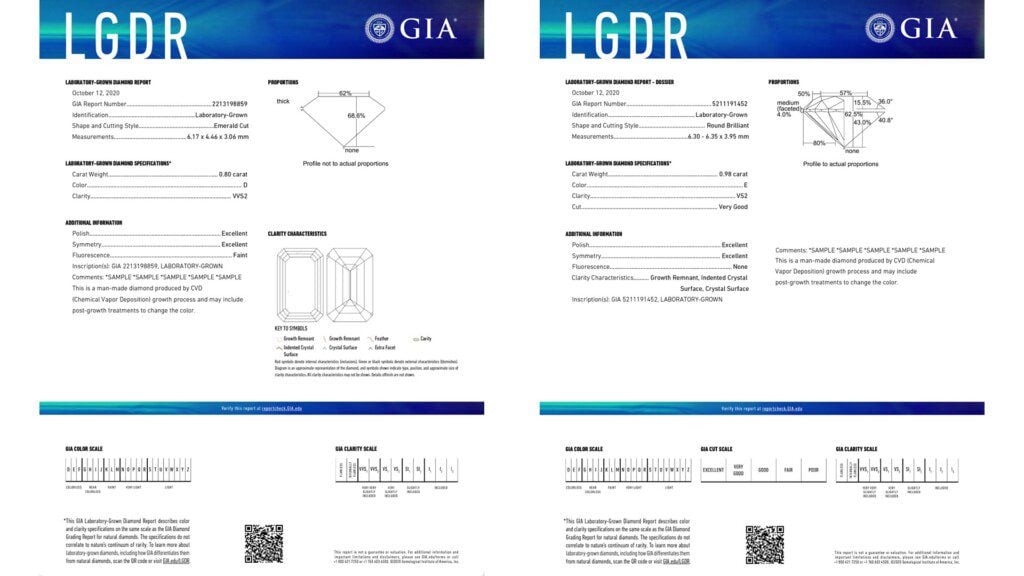
The American Gem Society Laboratories (AGS)
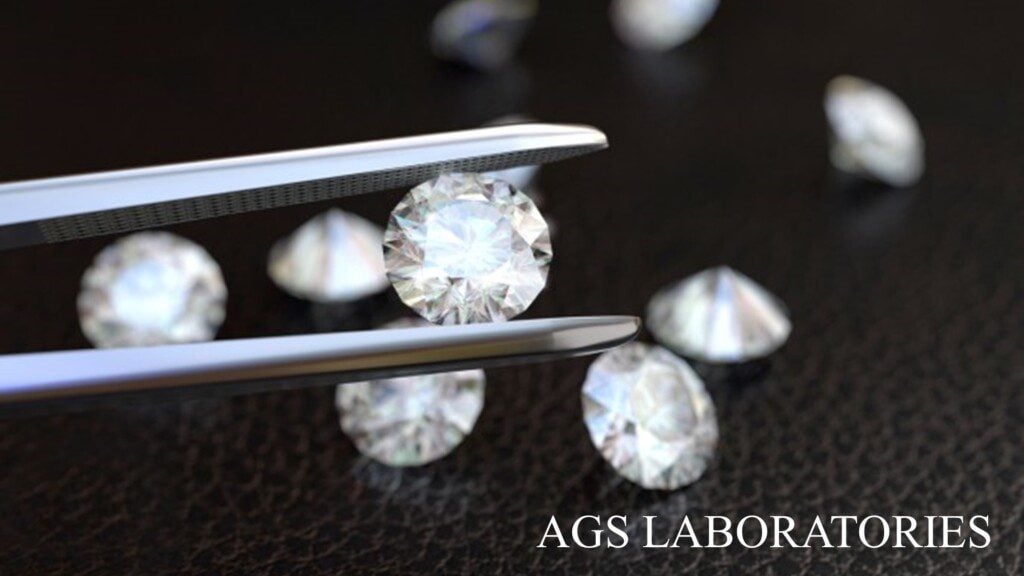
Robert Shipley established the American Gem Society (AGS) in 1934 as America’s moral and ethical society for jewelers. In 1996 the AGS opened its own laboratory to serve demand for higher standards in diamond cut assessment. The AGS Laboratories became well known for their strict “Ideal” cut grade (aka AGS Ideal or AGS Triple Zero). They improved on this in 2005 with the introduction of the industry’s first scientifically reviewed and diamond-specific performance metric. They are one of two top-tier laboratories offering cut quality and performance assessments for certain fancy shapes.
PriceScope Pointer: The AGS is best known for their strict cut and performance standards. The AGS Platinum Report is the certificate of choice for diamond brands renowned for superior cut quality.
The AGS Platinum DQD (left) and Proprietary DQD (right) are the flagship reports of the American Gem Society. They have 4Cs assessment, a plotted clarity diagram, and diamond-specific “ASET” imprints proving 3D light performance levels, which you can read about in our section on diamond cut analysis. Platinum Documents are available for round brilliant, princess, oval, emerald and cushion-shaped diamonds.
For an additional fee, AGS offers supplemental information online. The Only My Diamond platform stores a grading report PDF, along with further analysis, a standardized video of the actual diamond and a number of computer generated images (CGI) generated from the diamond’s 3D scan.
The AGS Diamond Quality Certificate is more than a grading report. It comes with a guarantee of authenticity and accountability for the diamond’s grade. It includes all features of the AGS Platinum reports above. This document is available only through AGS retail jeweler members.
The AGS DQR (left) is offered to manufacturers who prefer a lighter 2D proportions-based cut grade which mimics the GIA system. It was developed in response to manufacturers who could not understand the 3D Platinum system. It is less strict and not diamond specific. The AGS Gold DQR (right) comes with an assessment of polish and symmetry only, with no cut grade reported.
See the AGS Document Library for alternate report formats, including 3-stone and 5-stone collections and reports which have been archived since their metrics have evolved.
PriceScope’s 1-5 star ratings are categorical comparisons with the most thorough, consumer-focused online diamond and jewelry vendors, in categories, we believe reflect our experienced consumer community’s values. Check out PriceScope Jeweler Reviews.
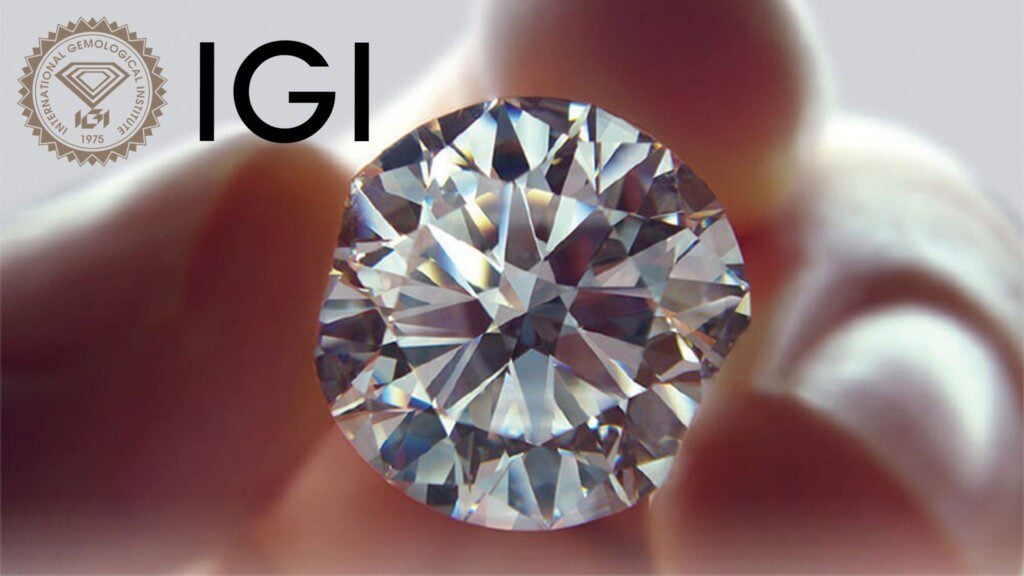
Established in 1975, the IGI is the largest gemological organization of its kind, with 18 laboratories and eight schools of gemology around the world. The IGI serves more consumer buyers than any other gemological institution, issuing grading reports for finished jewelry, in addition to loose natural, lab grown diamond and colored gemstone certification. The IGI was the first laboratory to grade “Hearts and Arrows” diamonds and pioneered full grading of lab grown diamonds in 2005, gaining more experience in that area than any other gemological institution.
PriceScope Pointer: The IGI grades finished jewelry, as well as loose gemstones, and established itself as a world leader in lab grown diamond certification in 2005.
The IGI natural diamond report provides a 4Cs assessment with a plotted clarity diagram. The IGI only provides a cut-grade for round brilliant diamonds. All other shapes are only graded for polish and symmetry, not for cut.
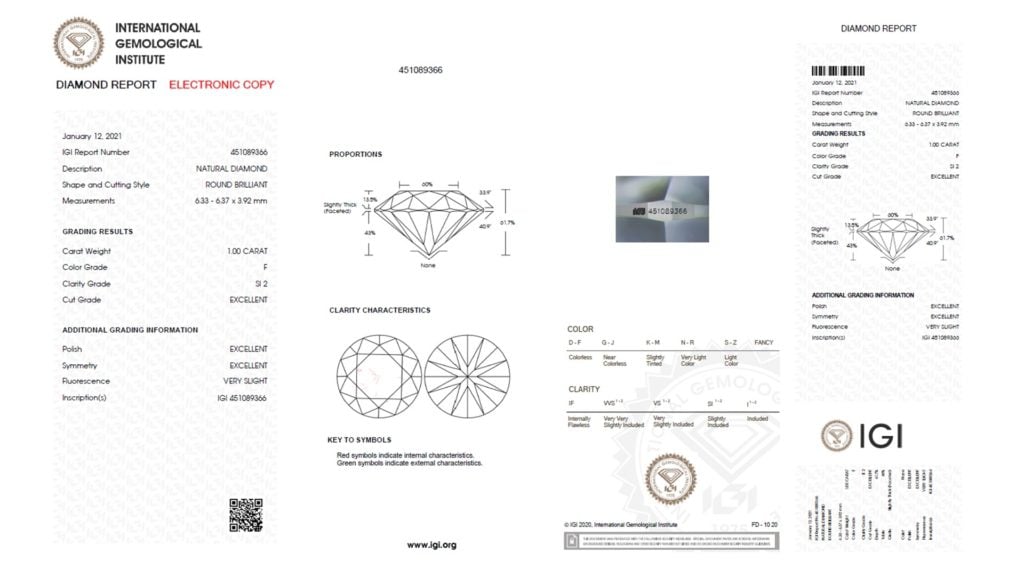
The gold standard for lab grown diamonds, the IGI Lab Grown Diamond report provides 4Cs assessment, a clarity plot, and standardized diamond photo. It is offered with or without Hearts and Arrows assessment.
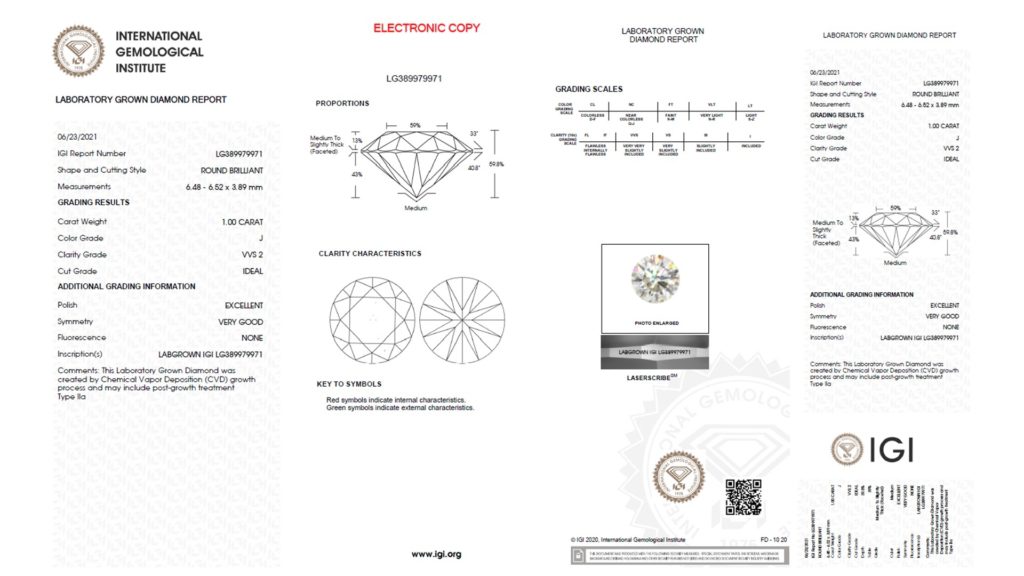
The IGI Hearts and Arrows report is associated with Excellent-Ideal cuts of superior quality. The report provides 4Cs assessment, with diamond-specific micrographs showing Hearts and Arrows quality.
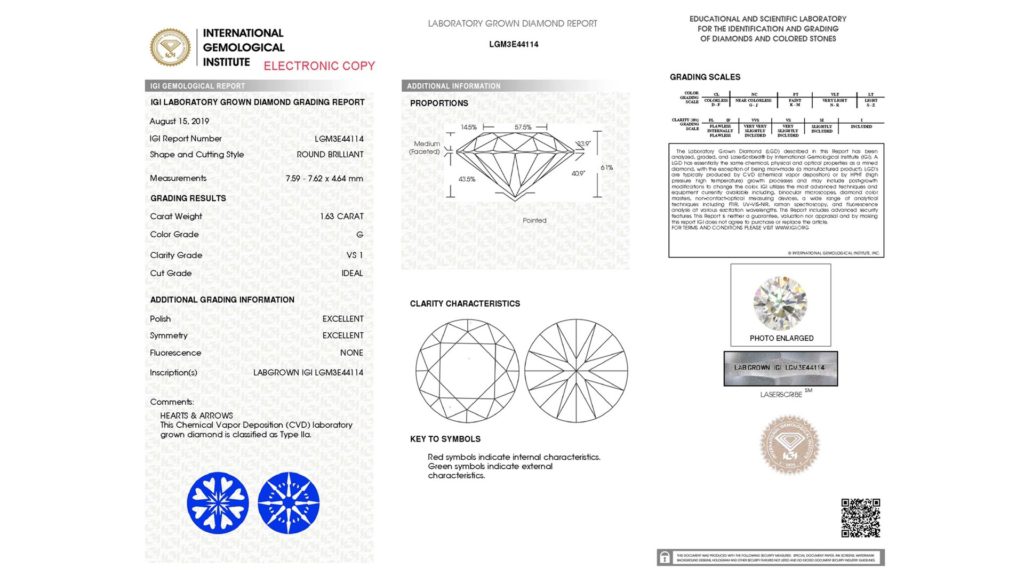
The IGI colored stone report reflects state of the art analysis. IGI screens every gemstone using the most advanced technologies to determine naturally mined, laboratory grown or simulant origin. Experienced graduate gemologists conduct further assessment in controlled conditions, detailing relevant gemological characteristics according to the strictest international system.
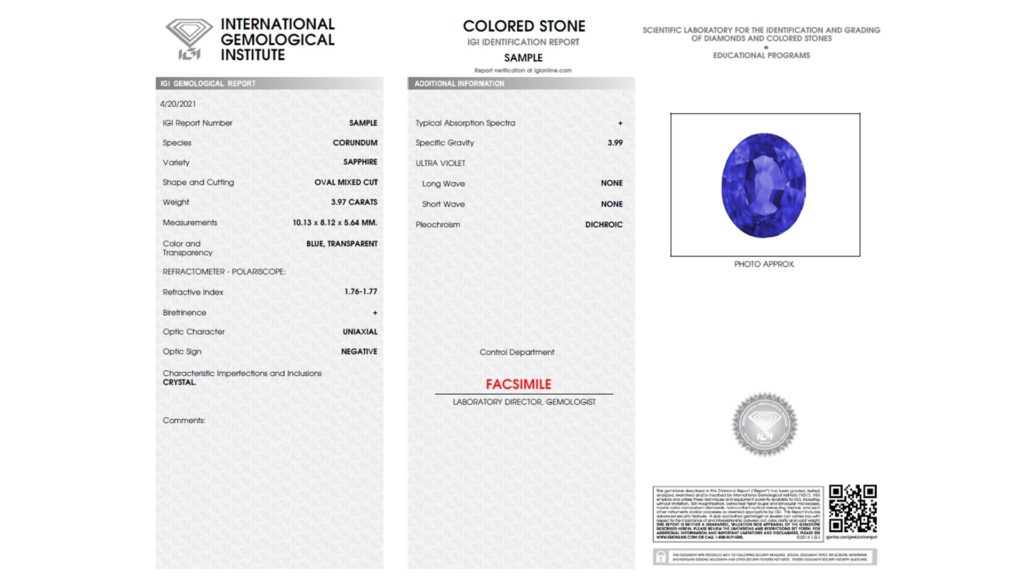
The IGI Jewelry Report provides all gemstone and mounting specifics, as well as clear standardized photos showing details of craftsmanship that may not otherwise be visible. More complex than the analysis of loose gemstones, IGI’s expertise in the analysis and documentation of finished jewelry items is unrivaled.
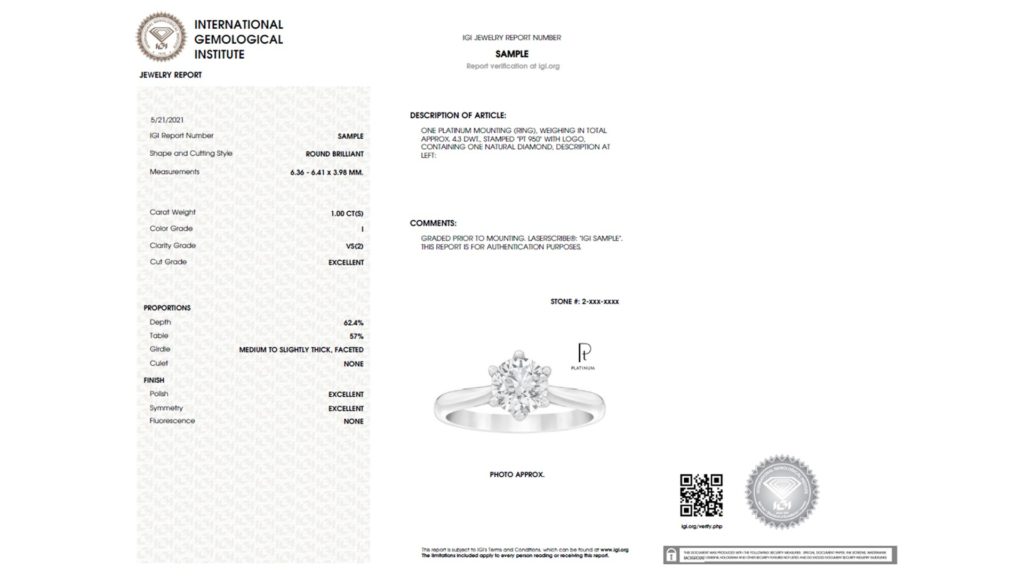
The small format IGI Jewelry Report provides reliable details and specifics for mounted jewelry at a cost that is more practical for the subject pieces. More complex than the analysis of loose gemstones, IGI’s expertise in the analysis and documentation of finished jewelry items is unrivaled.

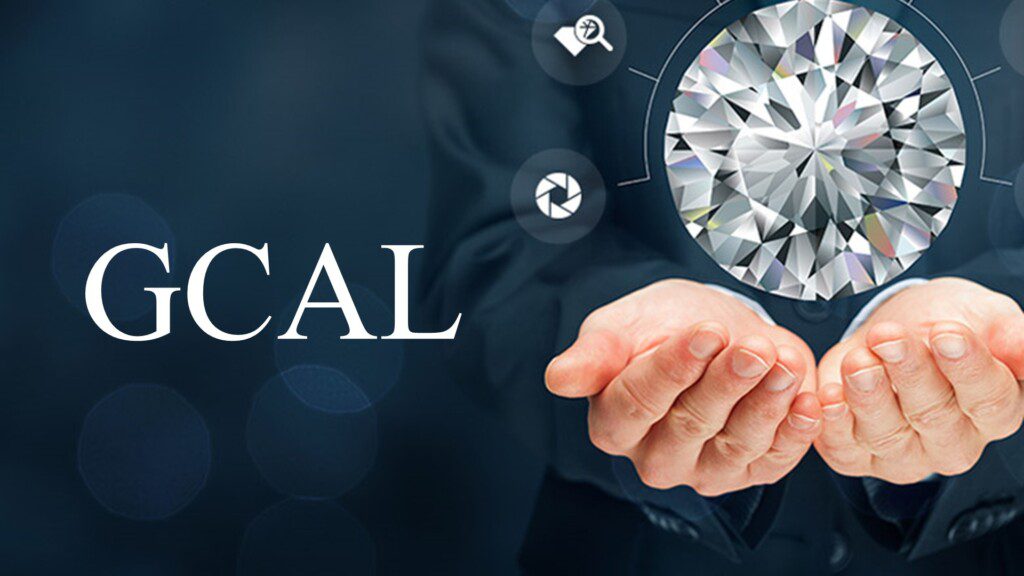
Established in 2001, the GCAL is the only laboratory issuing diamond “certificates” backed by a guarantee. The GCAL focuses on diamond cut analysis, using a copyrighted diamond-specific performance assessment method, and provides a unique diamond fingerprint known as Gemprint. The GCAL offers sophisticated imaging, is one of two top-tier laboratories offering cut grading for certain fancy shapes and is the world’s only only ISO 17025 Accredited Forensic Gem Laboratory.
PriceScope Pointer: The GCAL is best known for high quality photo and video services, lab grown diamond grading, Gemprint, and issuing a true diamond “certification.”
The GCAL Diamond Certificate has a 4Cs assessment, Gemprint diagram and Photomicrographs. It also comes with a diamond-specific Light Performance Profile indicating optical brilliance, optical symmetry and Hearts and Arrows (optional), which you can read about in our section on Cut Quality.
The GCAL Lab-Grown Diamond Certificate has the features of the Diamond Grading Certificate but is framed in a different color and indicates lab grown origin and growth-method.
For an additional fee, the GCAL offers additional services. These include Gemprint, a non-invasive, positive identification technology for each diamond which has been used by the FBI and Canadian Government, along with independent, standardized diamond photography and videography.
For many years overseas EGL locations over-graded diamonds. Over grading occurs when a laboratory consistently issues better color or clarity grades for diamonds than they would normally according to strict, industry-accepted international standards. The practice became egregious enough that in September, 2014, all EGL-graded diamonds were delisted and removed from the world’s largest trading platform.
“The Rapaport Group is opposed to the misrepresentation of diamond quality. The over grading of diamonds is an unfair practice that destroys consumer confidence and the legitimacy of the diamond industry… The diamond trade must prioritize the protection of consumers above profits.”
Soon after The Rapaport Group came to this conclusion, PriceScope also made the decision to remove all EGL-graded diamonds from our search engine in the interest of consumer protection.
PriceScope Pointer: Buyer beware – Certain EGL locations are infamous for famously over grading diamonds, in some cases by 3-4 grades, allowing unscrupulous sellers to overcharge consumers.
In any situation where an EGL graded diamond is being considered for purchase, we recommend the buyer hire his or her own gemological expert to analyze and accurately grade the diamond according to strict, industry-accepted international standards.
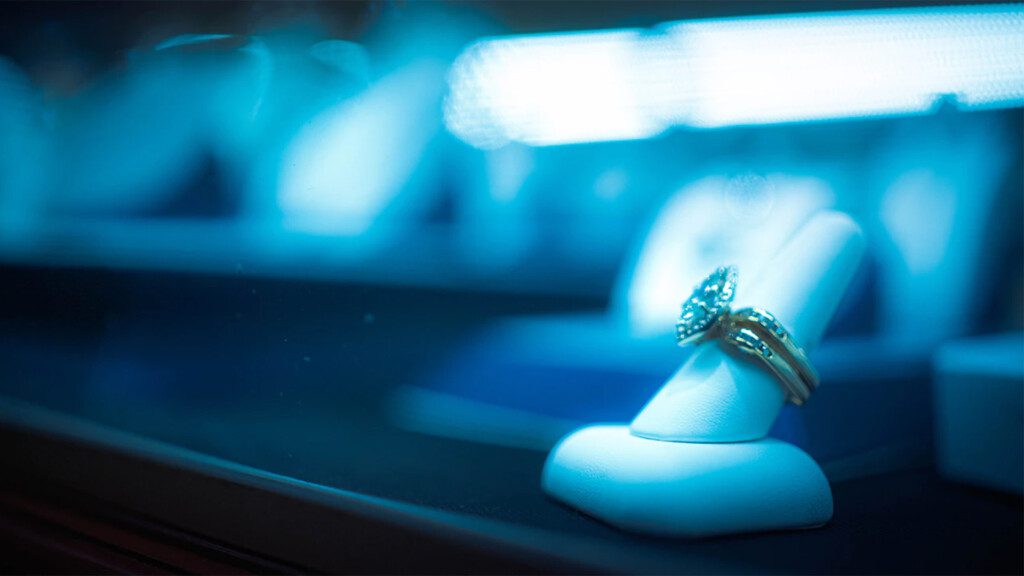
When shopping in malls and department stores you will see “certificates” for finished jewelry. These documents should not be confused with loose diamond grading reports. They are commissioned by the store and issued by a winning bidder, often assembly-line style for thousands of articles at a time. They lack the precision and strictness of loose diamond grading reports which report on a single, specific gemstone.
Grades for diamonds in finished jewelry can be inflated. Most jewelry grading is done for big box stores that solicit bids from competing graders. ‘Discount laboratories,’ which primarily exist to write jewelry reports, inflate color and clarity grades to win and keep big contracts. The situation is so common that many shoppers in malls get a false, negative first impression regarding warmer colors and normally eye-clean clarity grades.
Jewelry sellers using eCommerce platforms like eBay may use discount laboratories for jewelry grading, since inflated grades make their products seem more competitively priced in searches.
Some top-tier laboratories do issue jewelry reports. These institutes, known for loose diamond and gemstone grading, are more capable of enforcing strict, internationally accepted standards than little-known discount laboratories which would not exist without the chain stores they serve.
PRACTICAL ANALOGY: Combo Meal versus À La Carte
For daily-wear pieces at economical prices a finished jewelry report is useful, as long as the grading context above is understood. Like a combo-meal, it inexpensively provides information about a jewelry piece’s gemstones, metal content, etc. in a simple, affordable manner. Alternately, a diamond costing hundreds or thousands of dollars by itself should be treated à la carte, accompanied by its own report from a top-tier laboratory, describing the diamond only.
Get full protection: Our vetted vendors Whiteflash, Blue Nile and James Allen sell diamonds graded by top-tier laboratories. As an added layer of protection, those vendors have in-house gemologists inspect those diamonds to ensure accurate grading.
With any subjective measure there are bound to be differences. Honest differences of opinion are understandable. Intentional differences are another matter.
When grading color and clarity reputable gemologists use a set of strict, industry-accepted international standards established by the GIA in the 1950s. Top-tier laboratories and appraisers use calibrated master color stone-sets and uniform clarity standards to ensure a baseline of uniformity lab to lab and location to location.
With that said, no two diamonds are alike. Color and clarity occur on a sliding scale and a diamond sitting directly on the border of two grades may come out on one side of the other, depending on the subjective opinion of the gemologist making the judgment.
To that end, a standard deviation of +/- one grade is generally deemed acceptable among professionals. While this is logical from an analytic standpoint a difference of even one grade may have a significant influence on value. For this reason it’s important for a buyer and a seller to agree on the document of authority prior to sale.
The influence of standard deviation on diamond grading and value is mitigated when you buy from a seller who offers a full credit upgrade policy. Under such a policy the full amount you pay remains available for you to apply again to a different diamond, apples to apples, for the duration of that policy.
Long term benefits: Few sellers anywhere match the policies of Whiteflash, offering you 100% upgrade credit toward a new diamond that costs more than your original spend. Blue Nile and James Allen offer full credit toward a new diamond costing 2X or more than your original spend. The money you invest with these PriceScope vendors can ultimately be used again, toward your next significant purchase.
Over grading occurs when a laboratory, appraiser or seller continually promotes diamonds as having better color or clarity grades than they would normally receive according to strict, industry-accepted international standards.
For example, a person stating that a diamond has “F color, VS2 clarity” where top-tier laboratories or appraisers would collectively judge it to have H color, SI1 clarity – is over grading that diamond.
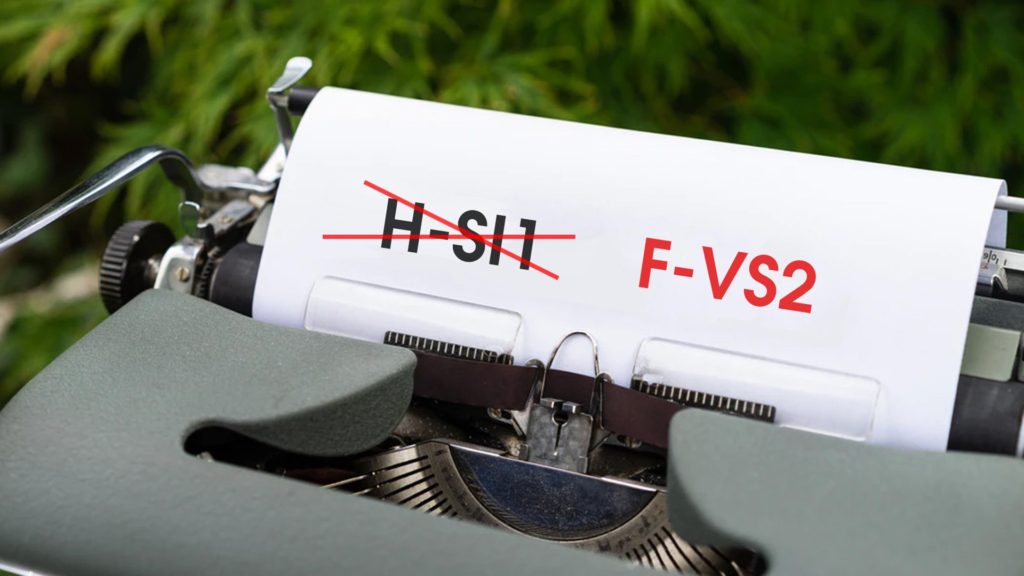
Why Over Grade?
Imagine that Simple Sam is shopping for a diamond. “Honest Abe Jewelers” only sells diamonds graded by top-tier laboratories. Simple Sam is considering these two diamonds from Honest Abe. He really wants the F color, but it’s stretching his budget.
“Terrible Herb Jewelers” says he can make Sam a better deal:
Sam believes this is a no-brainer and buys the 1.00 carat diamond from Terrible Herb. Unfortunately, nobody told him about over grading so he didn’t end up with a diamond graded by a top-tier lab.
*Sam paid $8,000 for a diamond that would have been graded H – SI1 by a top-tier lab. So, not only did he fail to achieve his color goal… he paid $1,000 more for a diamond with lower color and clarity than Honest Abe was offering him for $7,000. Terrible Herb was even rewarded by Sam’s lack of education, paying his diamond supplier far less for that misrepresented, over-graded diamond than Abe would have paid his supplier for correctly graded diamonds.
It’s highly possible that down the road, a family member will inherit the diamond and have it appraised only to find out Sam was gouged by an unscrupulous seller.
Under grading occurs when a jewelry professional intentionally claims a diamond has lower grades than it would normally receive according to strict, industry-accepted international standards.
The goal of intentional under grading is to win consumer business by creating fear-based doubts about other professionals.
Example 1: A local jeweler disparages a local consumer’s online diamond purchase, implying the online seller is incompetent or untrustworthy, hoping that consumer will return that diamond and purchase there, instead. This tactic may be used against any other seller, but the local/online example is most frequent.
PriceScope Pointer: Someone who sells diamonds and jewelry for a living can’t be expected to give an unbiased opinion about diamonds and jewelry one of their clients (or potential client) purchased elsewhere.
Example 2: A professional appraiser has undisclosed ties with a store or stores and under grades / undervalues a consumer’s recent purchase, implying the seller is incompetent or untrustworthy. The appraiser suggests the consumer return the purchase and buy from (store ABC). If this happens the appraiser will receive a commission from that store.
Consumers who want to verify a diamond purchase should not ask a person or company that sells diamonds or jewelry to perform that verification. There are independent appraisers who provide these services. Be advised that an appraiser with offices in a jewelry store is not independent. A true independent appraiser is a disinterested third party who works on your behalf to assess your diamond purchase clinically and report his or her findings only.
Get fast answers to any question: Ask our community of unbiased independent helpers.
Ready to find your diamond?
If you’re looking to buy loose diamonds online, use our special tools to reveal the best cut quality diamonds! Start your diamond search and choose from over a million loose diamonds for sale. Use our filters to find either natural or lab diamonds, as well as fancy color diamonds.

Retail Diamond Prices Chart Updated Monthly.

For the first time, PriceScope is proud to launch our comprehensive Lab-Grown Diamond Price Analysis, at the beginning of each month, we will provide actionable insights into this rapidly evolving…
For over two decades, PriceScope has delivered comprehensive insights into the online retail diamond market, empowering prosumers, traders, and industry professionals with actionable natural diamond price analysis. This month’s analysis examines…
A $25,000 budget for an engagement ring gives you access to a wide range of beautiful designer options. This budget allows you to invest in a larger diamond, a unique…

Want to stay updated on the most recent blogs, forum posts, and educational articles? Sign up for Bling News, PriceScope’s weekly newsletter.